Oral History with Jennifer Campbell-Dawkins
Oral History conducted with Jennifer Campbell-Dawkins, at the Edwards' home.
Oral History conducted with Jennifer Campbell-Dawkins, at the Edwards' home.
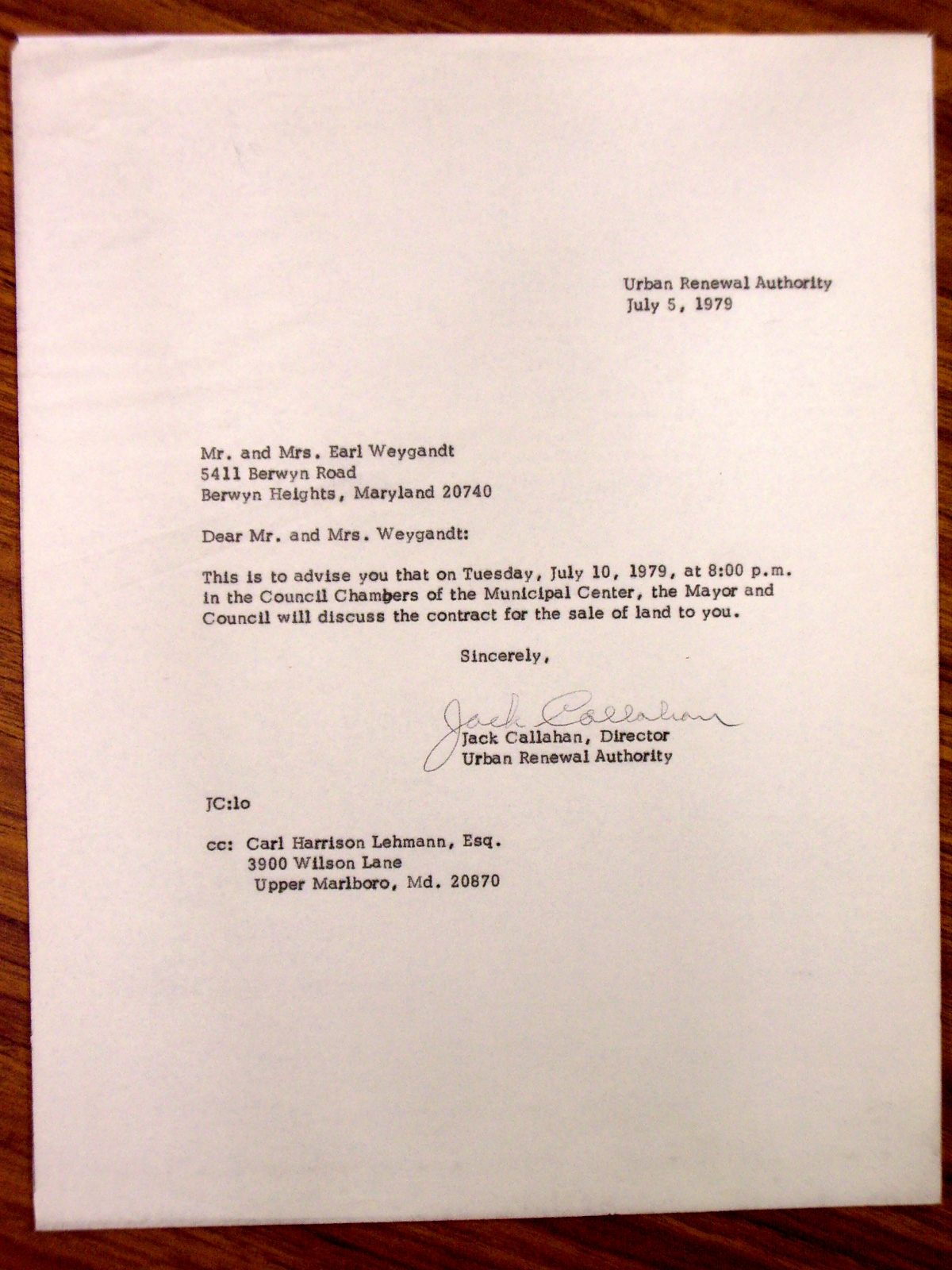
Council will discuss sale of land to you on July 10 at 8:00.
Section C: Land Use Plan (cont'd Land Use Provisions and Building Requirements). Regulations, Controls and Restrictions section, cont'd. Light Industrial Use Areas subsection.
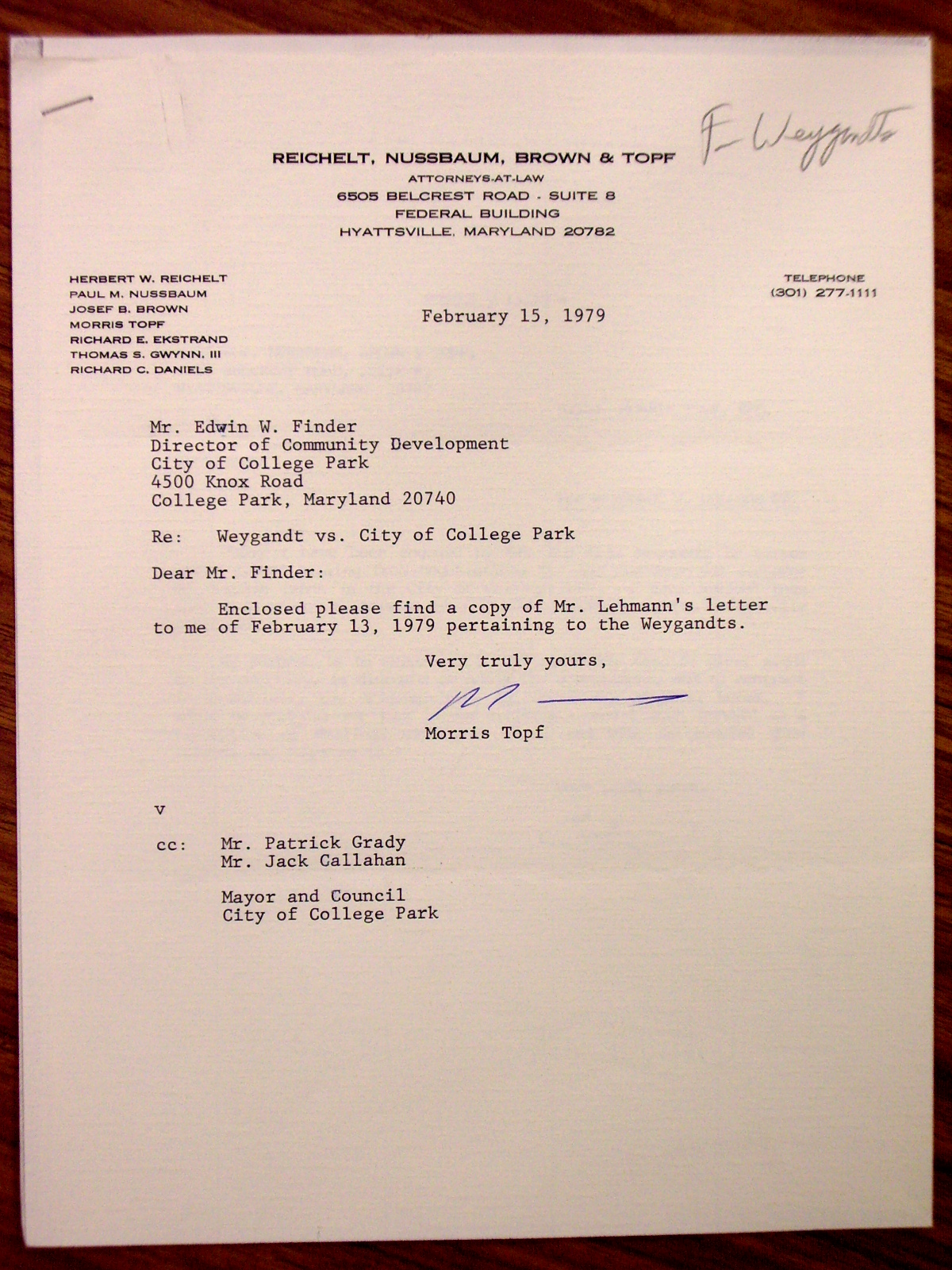
Duplicate of sections of (object) item-5v0wgV and item-qSyk3I

4702 Lakeland Rd Project Parcel 23-8' Marie Douglas
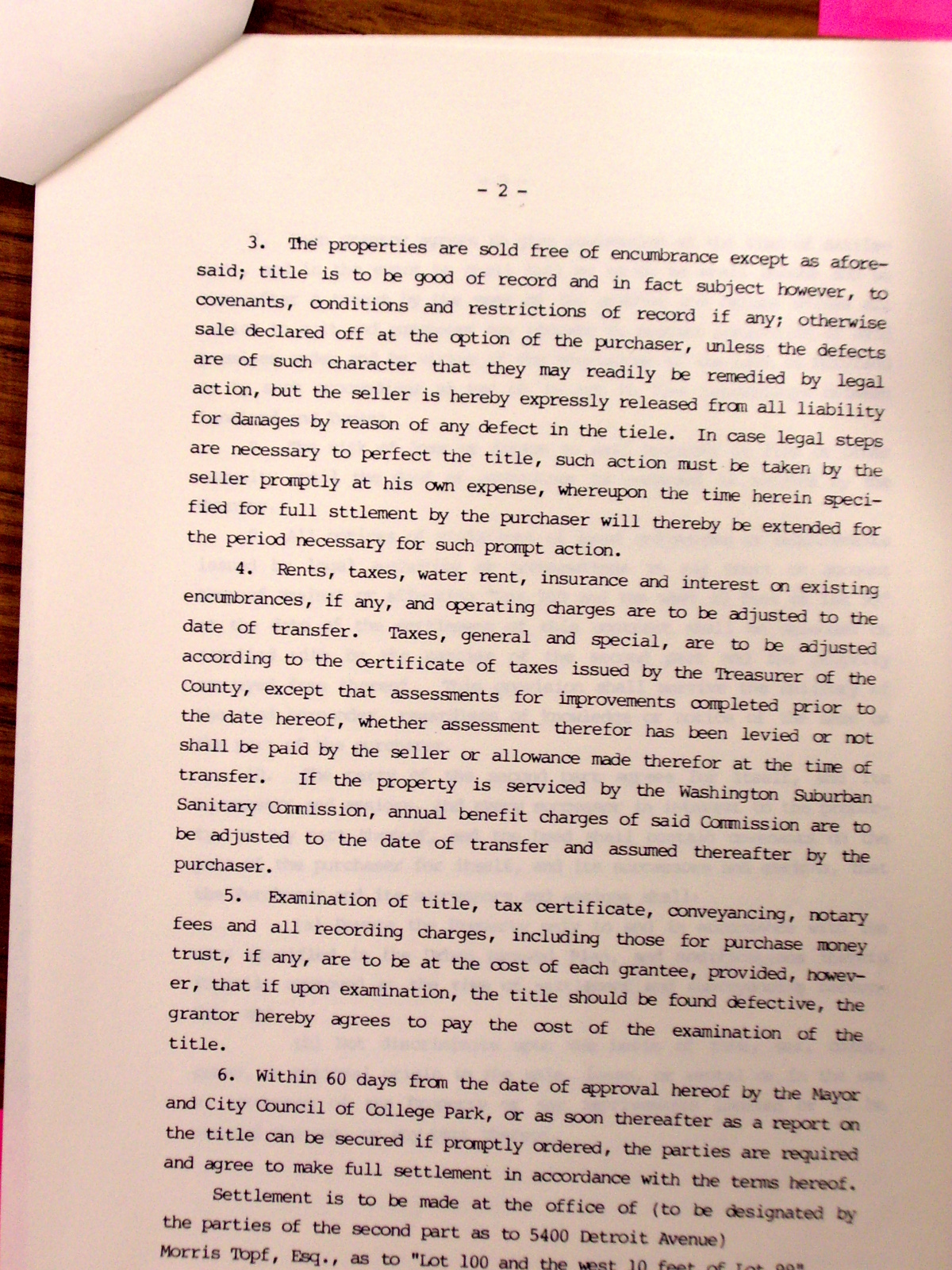
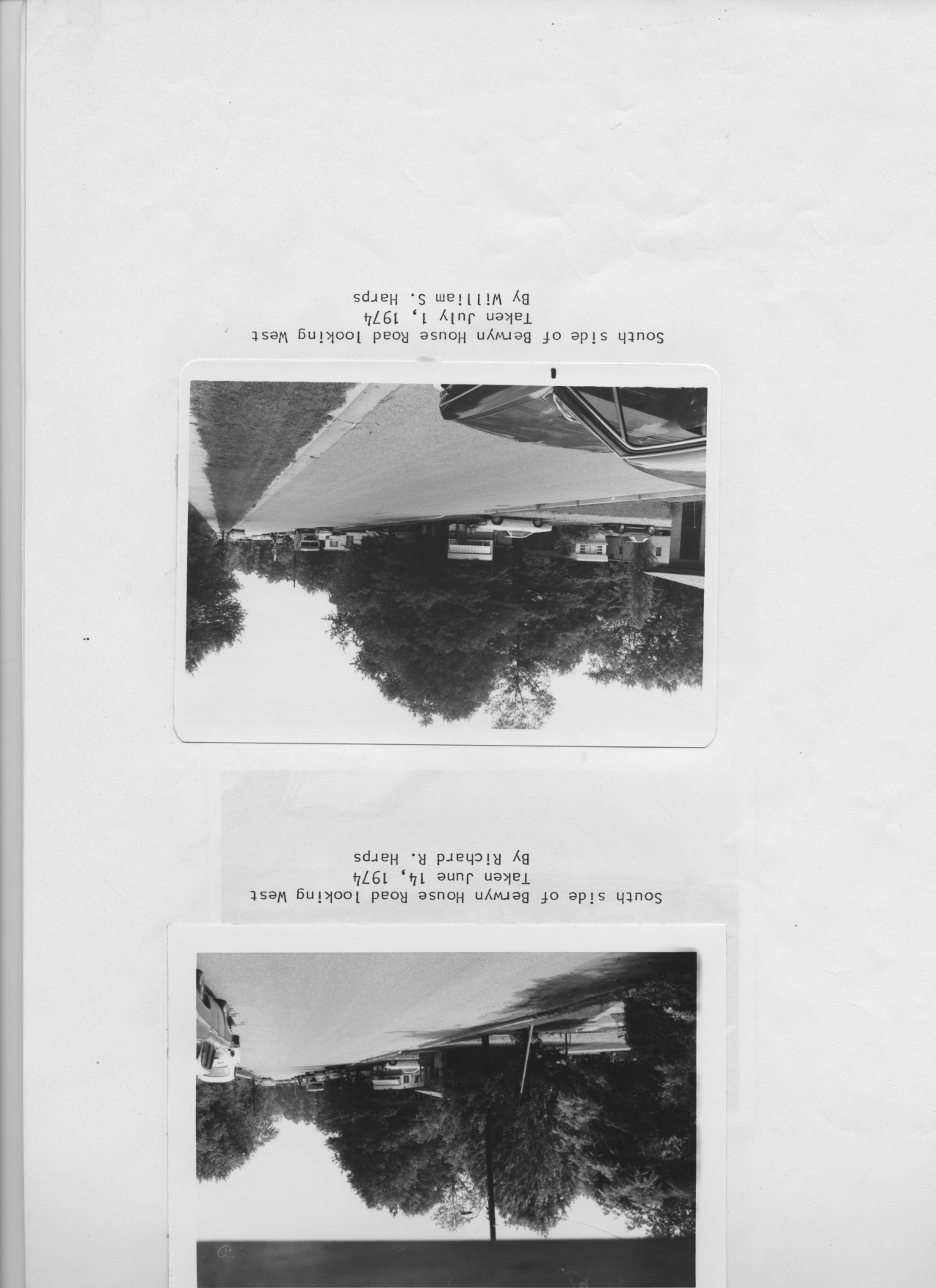
Berwyn House Rd
On Thursday February 07, 2013, members of the Lakeland Community Heritage Project (LCHP) visited Dr. Mary Corbin Sies's class in "Social and Ethnic Issues in Historic Preservation" at Holzapfel Hall on the University of Maryland Campus (Seminar Rm 1108). The members that participated in the discussion were: Violetta Sharps Jones, Avis Matthews, Maxine Gross, Pearl Lee Campbell Edwards, and James Edwards III. The discussion was centered around the semester-long project the students will be working on regarding Lakeland and Urban Renewal. There was also discussion of Lakeland's history, it's relationship to the University of Maryland, segregation in College Park and in the Prince George's County school system, as well as everyday life in Lakeland.
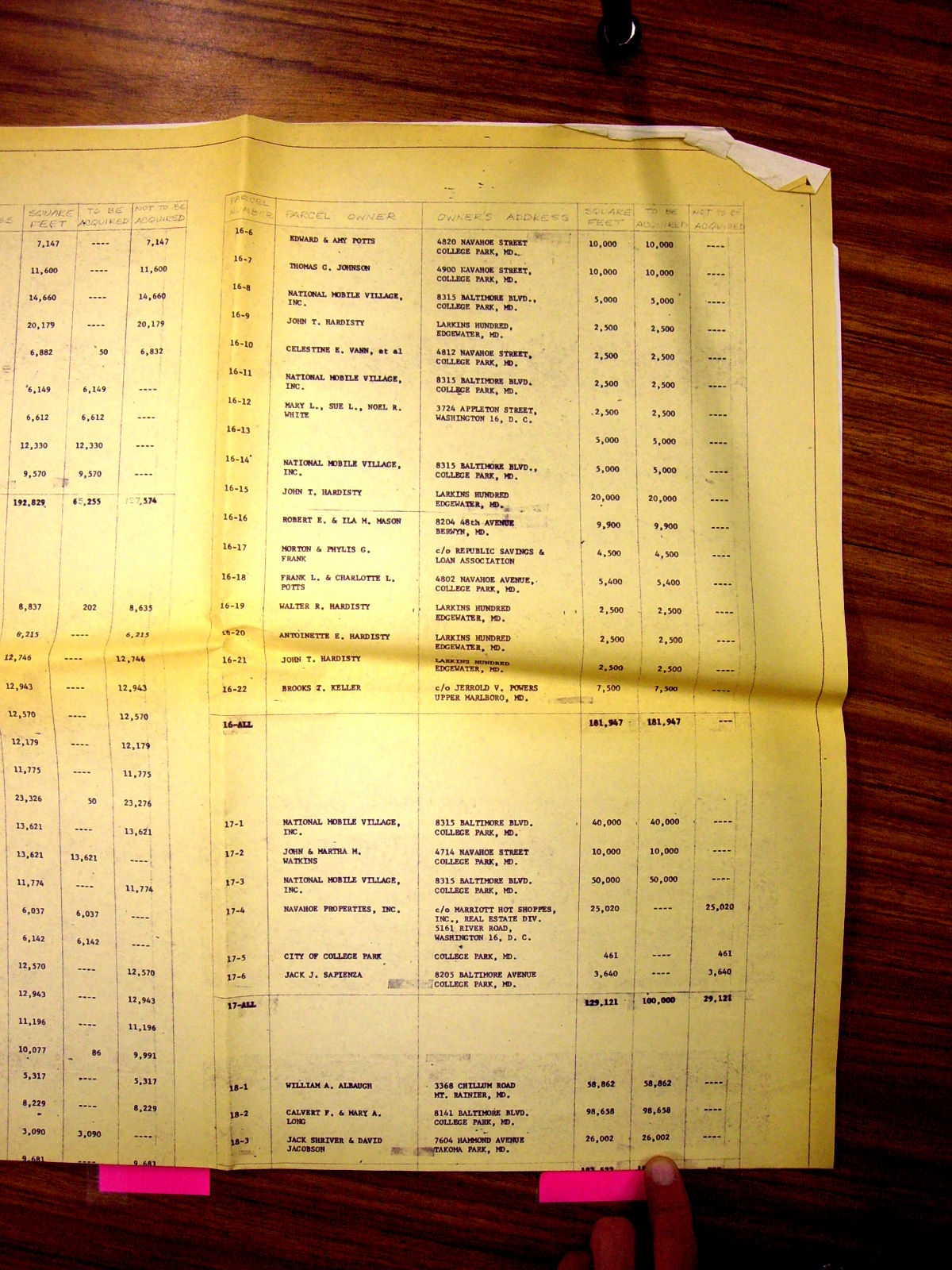
Section 4 of 8

Image taken from contact sheet in collection

"Resolved, that the application of W. Earl Weygandt for an extension of time..." Letter from Prince George's County Board of Appeals
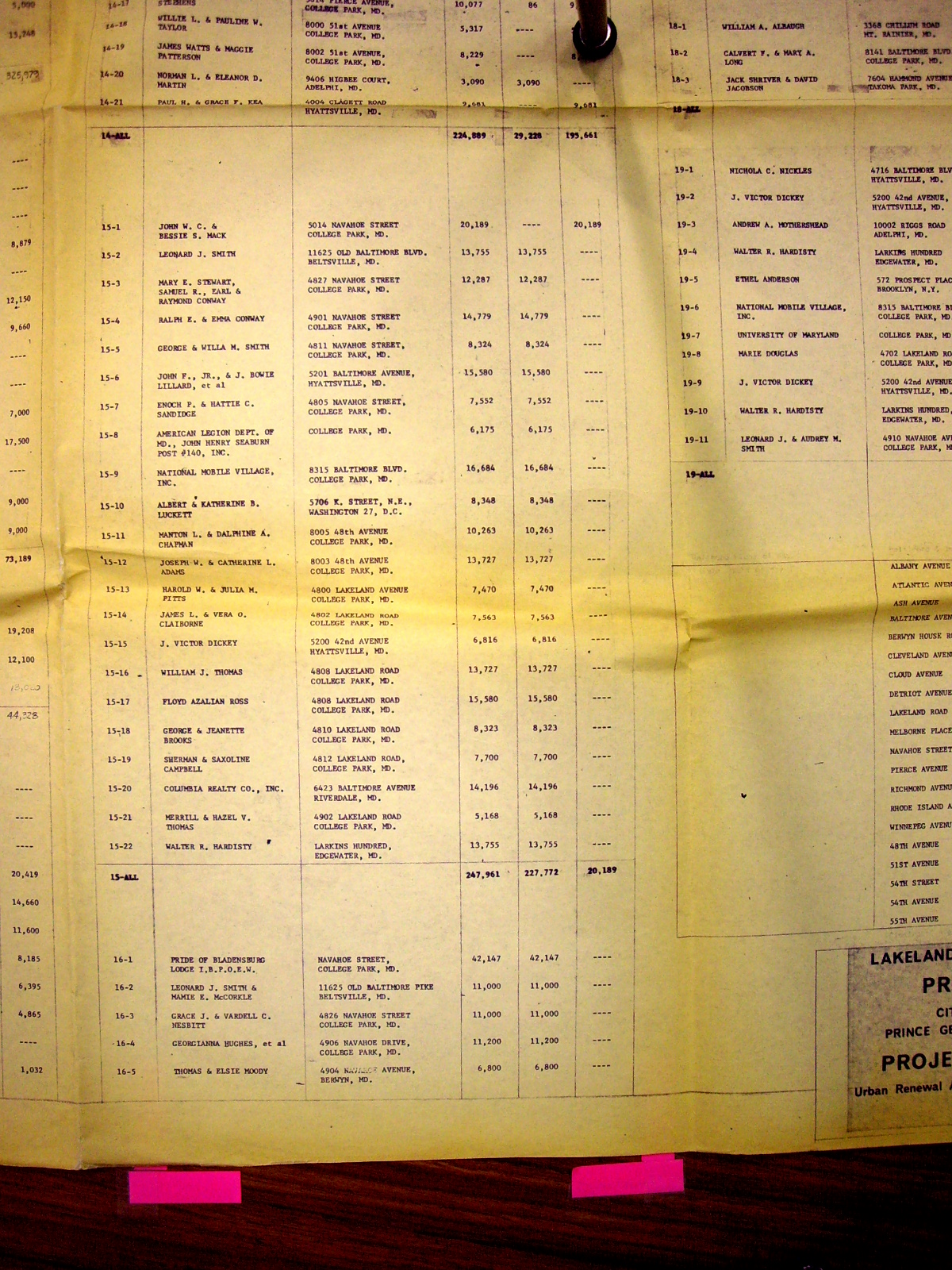
Section 6 of 8

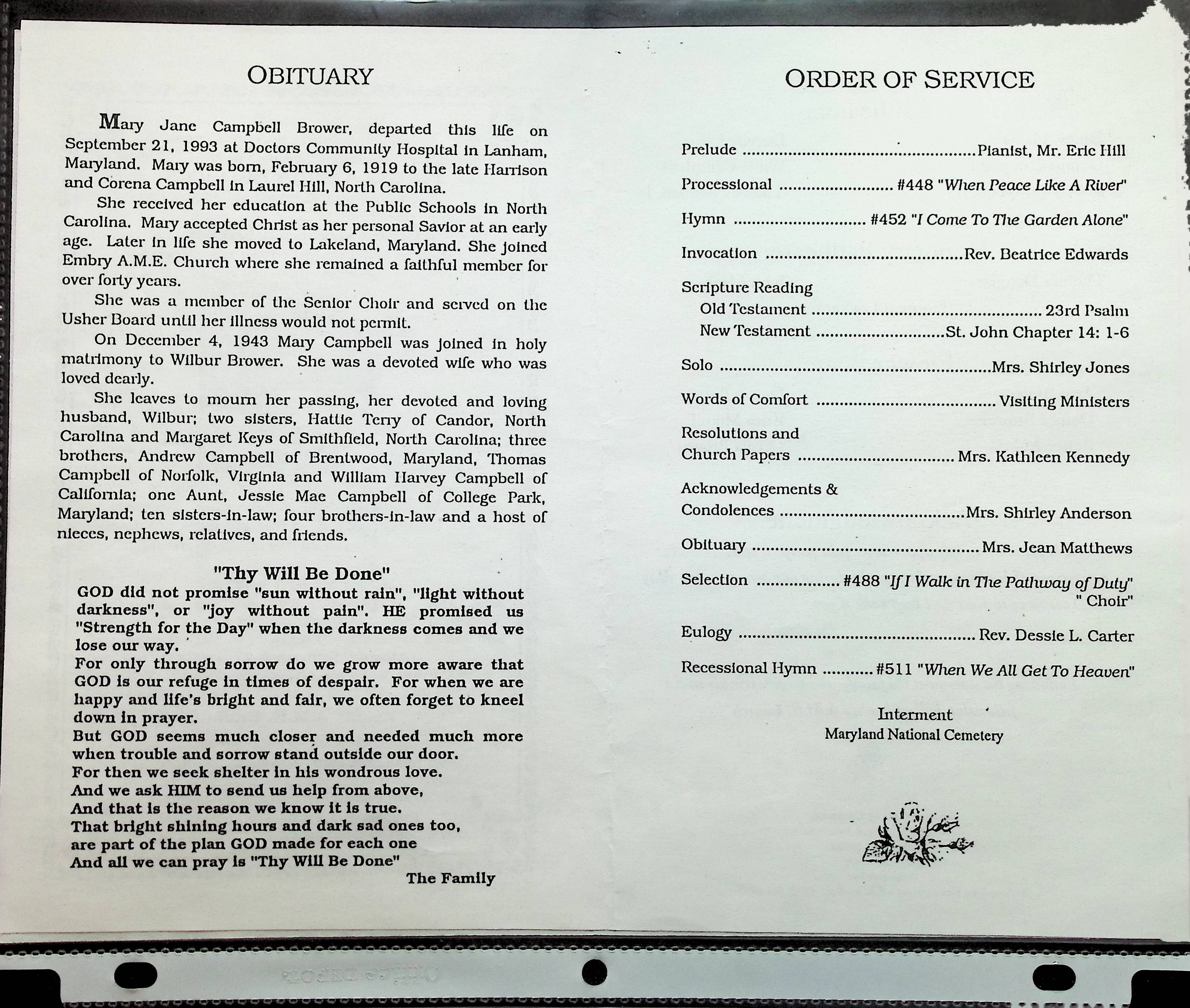
Section 1 of 8
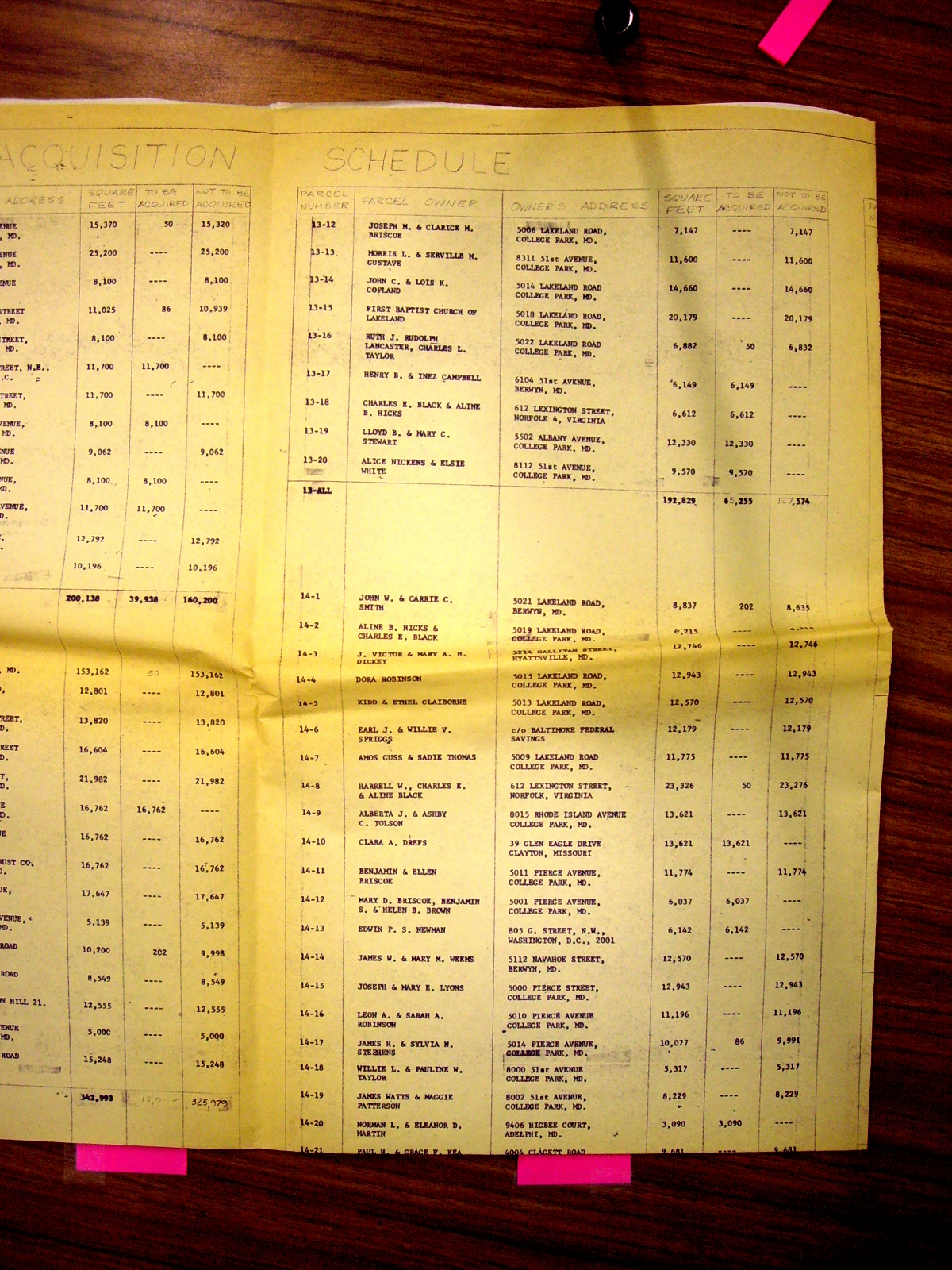
Section 3 of 8
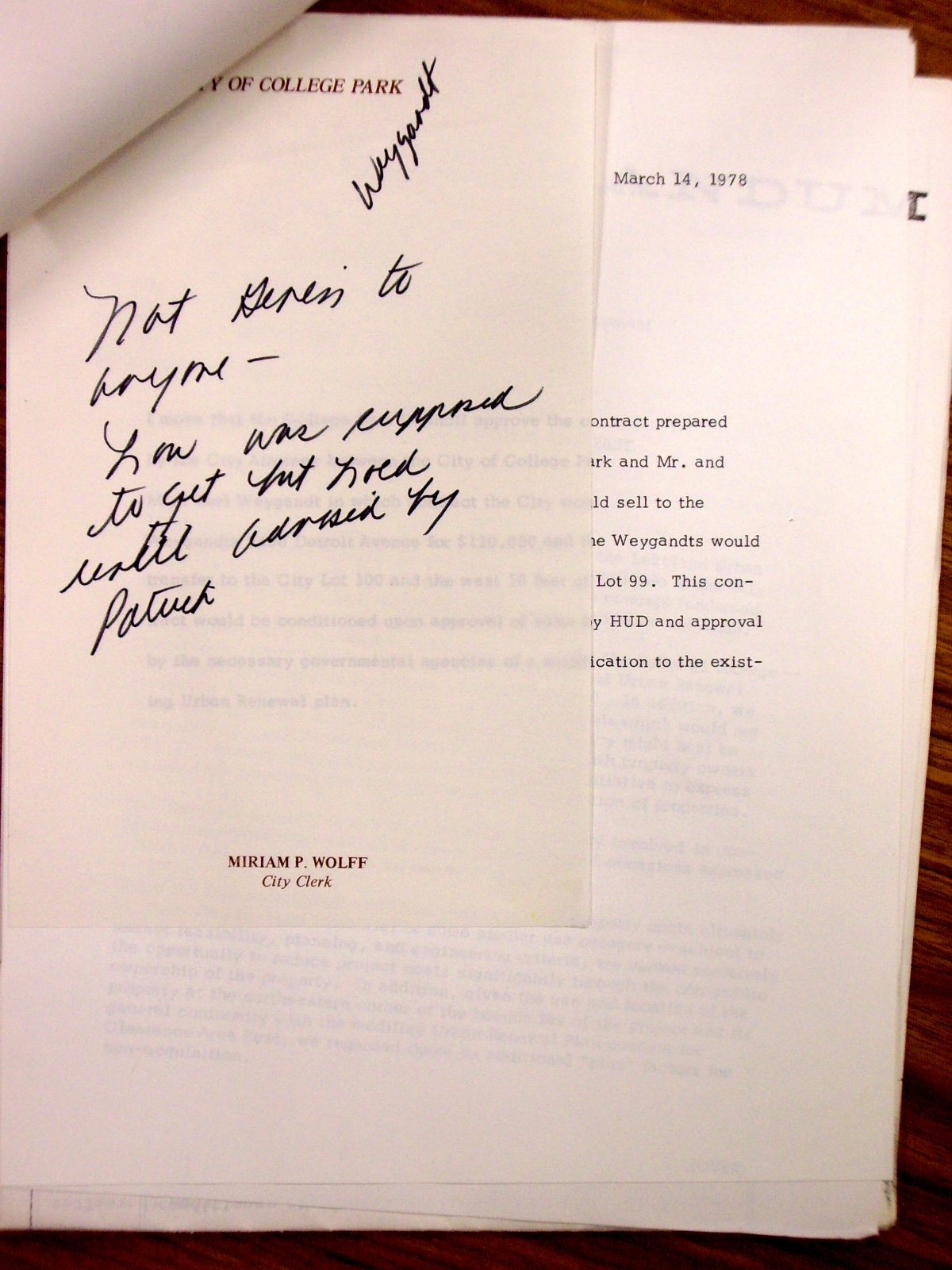
Hand written memo from Miriam Wolff: "Not given to anyone - Lou was supposed to get but hold until advised to Patrick"; Motion to sell back Weygandt property (Lot 100, 10 feet of lot 99 and 5400 Detroit Avenue) conditioned upon HUD approval; copy of contract and memorandum

Victor Dickey 4704 Lakeland Rd Block 19 w 50"of lot 11
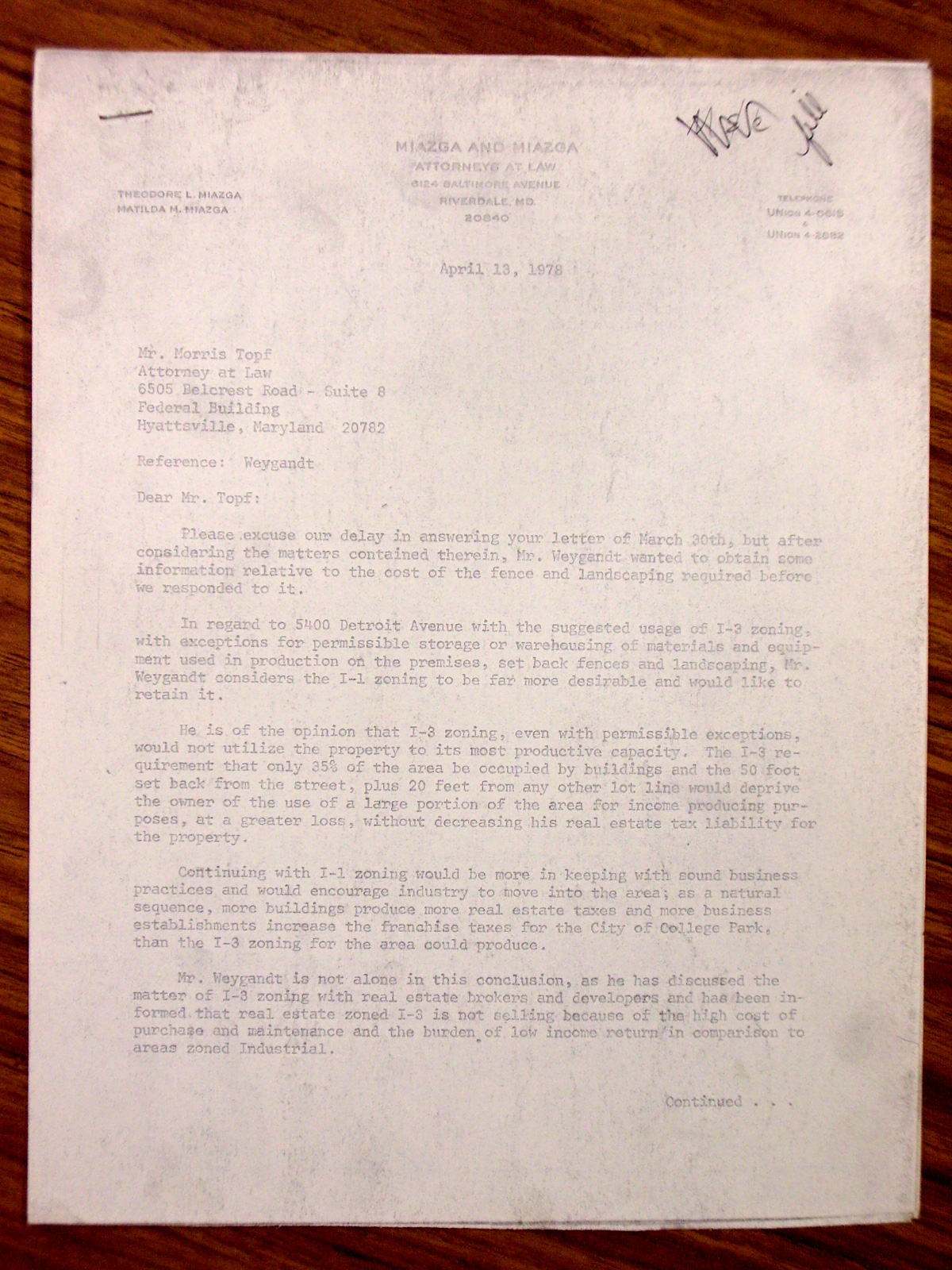
Responding to City proposal regarding Weygandt Property
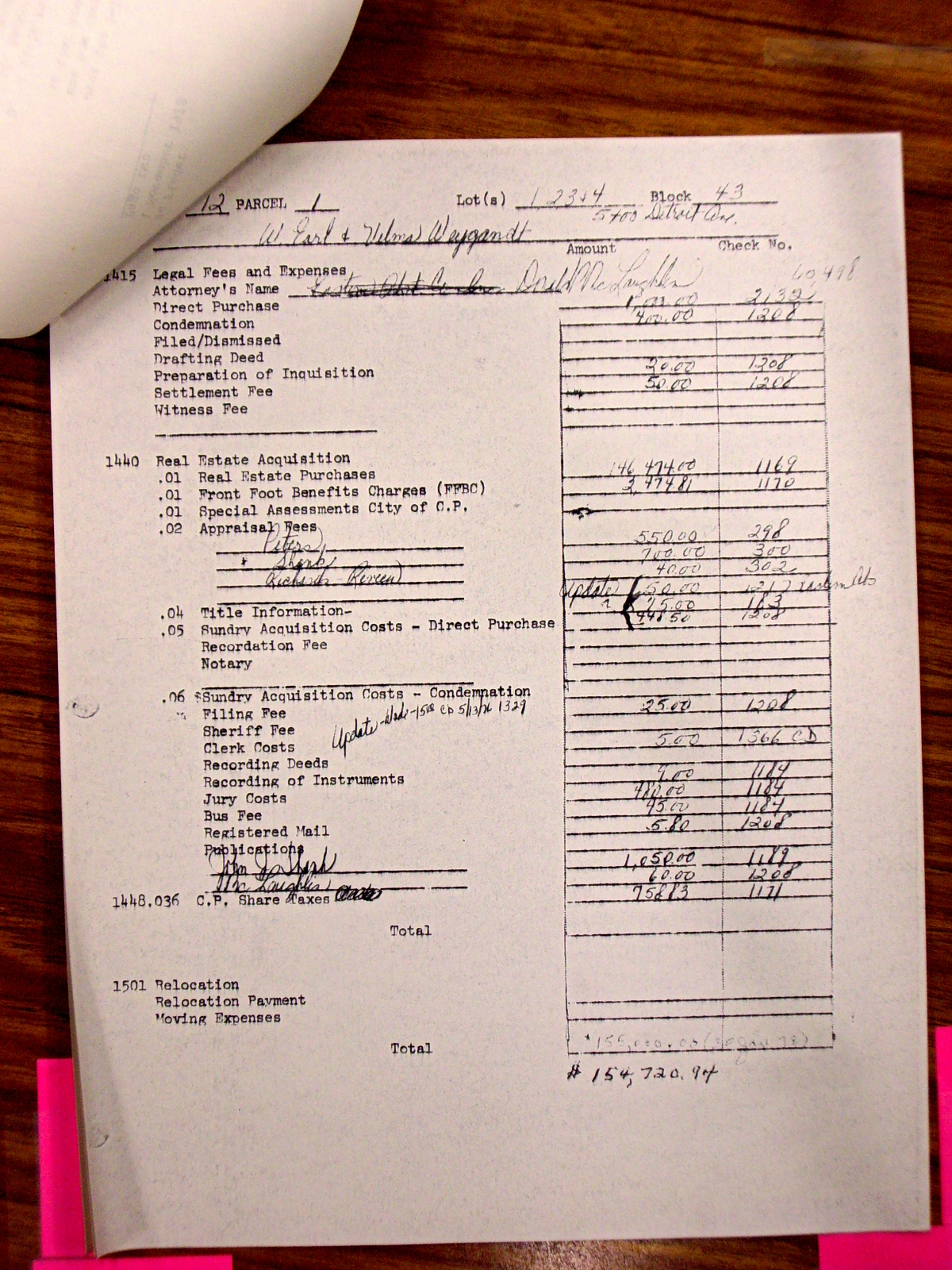
Includes appraised values and other costs

Edwards house twenty years after another image in this collection.
Section D: Project Proposals. Statement of Special Conditions. Procedure for changes in approved proposals.
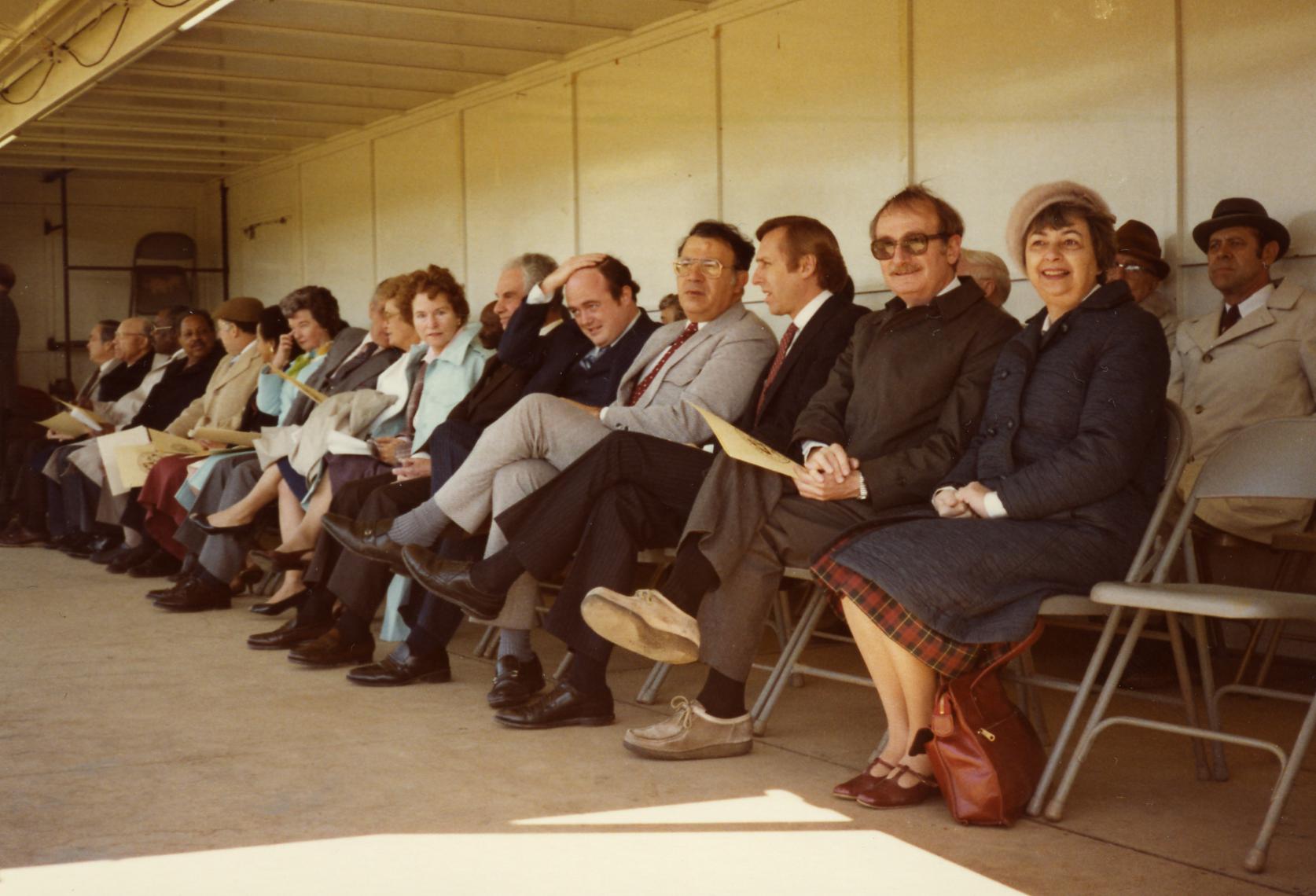
Dignitaries at groundbreaking event for Spellman House Apartments the first redevelopment project for urban renewal in Lakeland

4906 Navahoe St Project Parcel 20-6
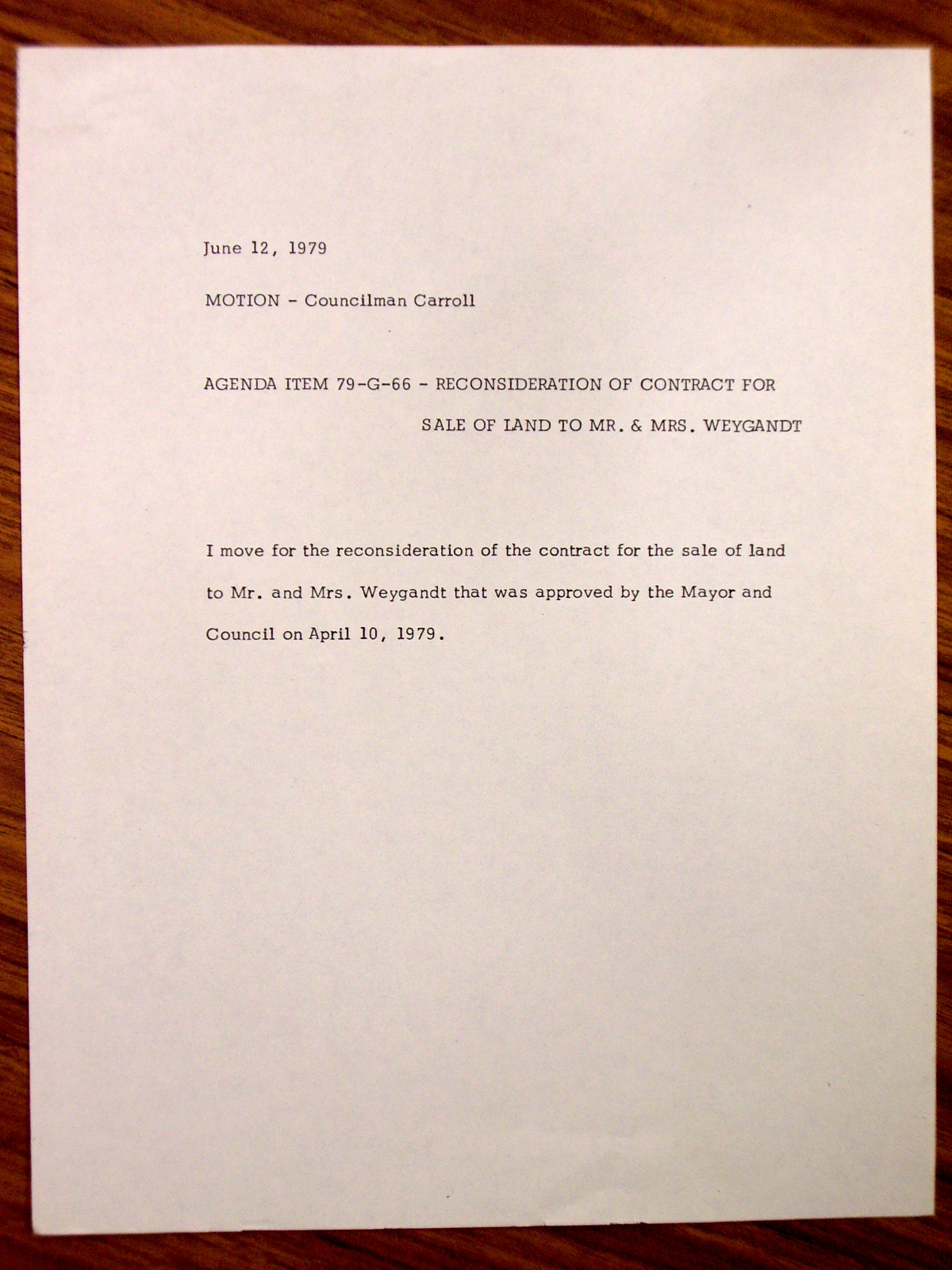
79-G-66 Reconsideration of Contract for Sale of land to Mr. and Mrs. Weygandt

4712 Navahoe National Mobile Village Inc Block 17 Lots 4,5 and part of lot 3
Newspaper clippings about Lomax's becoming elected mayor. Additional clippings about urban renewal, and Parkdale wins.
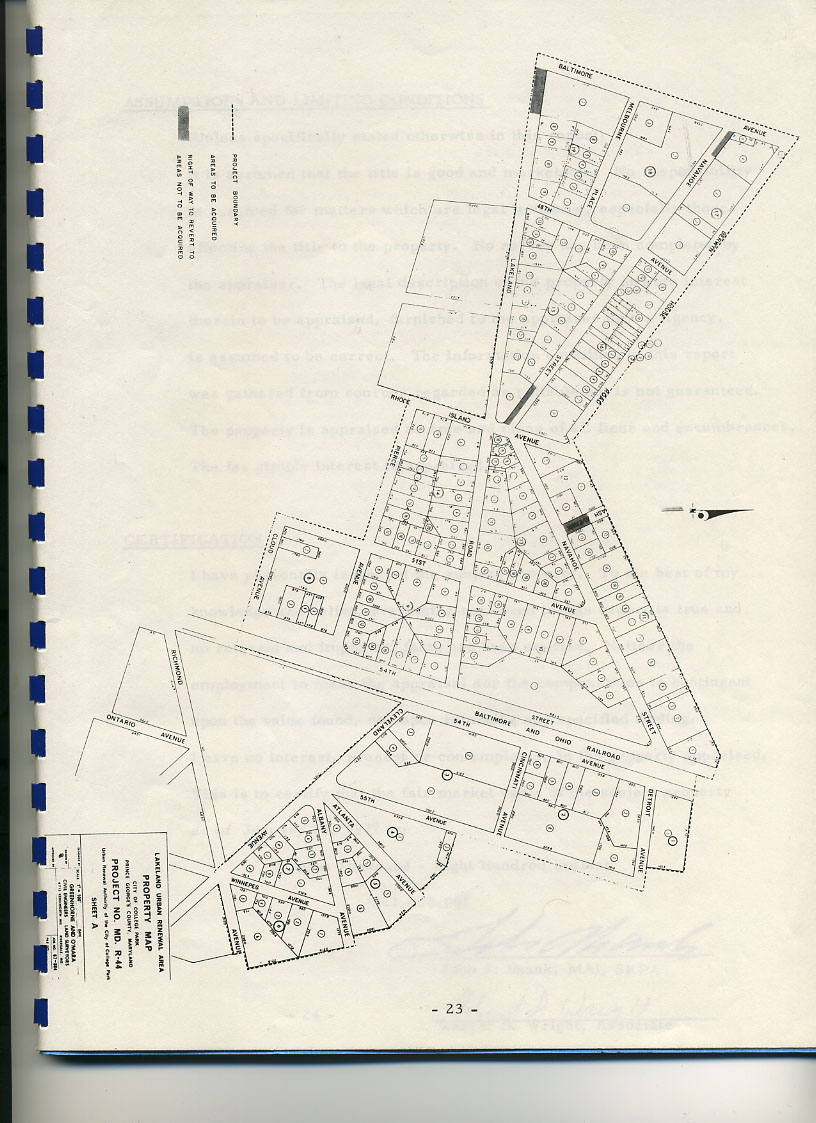

Letter from College Park Mayor St. Clair Reeves to UMD Chancellor Gluckstern, September 12, 1977

Mary Braxton’s hand written notes for statement to the College Park City Council.

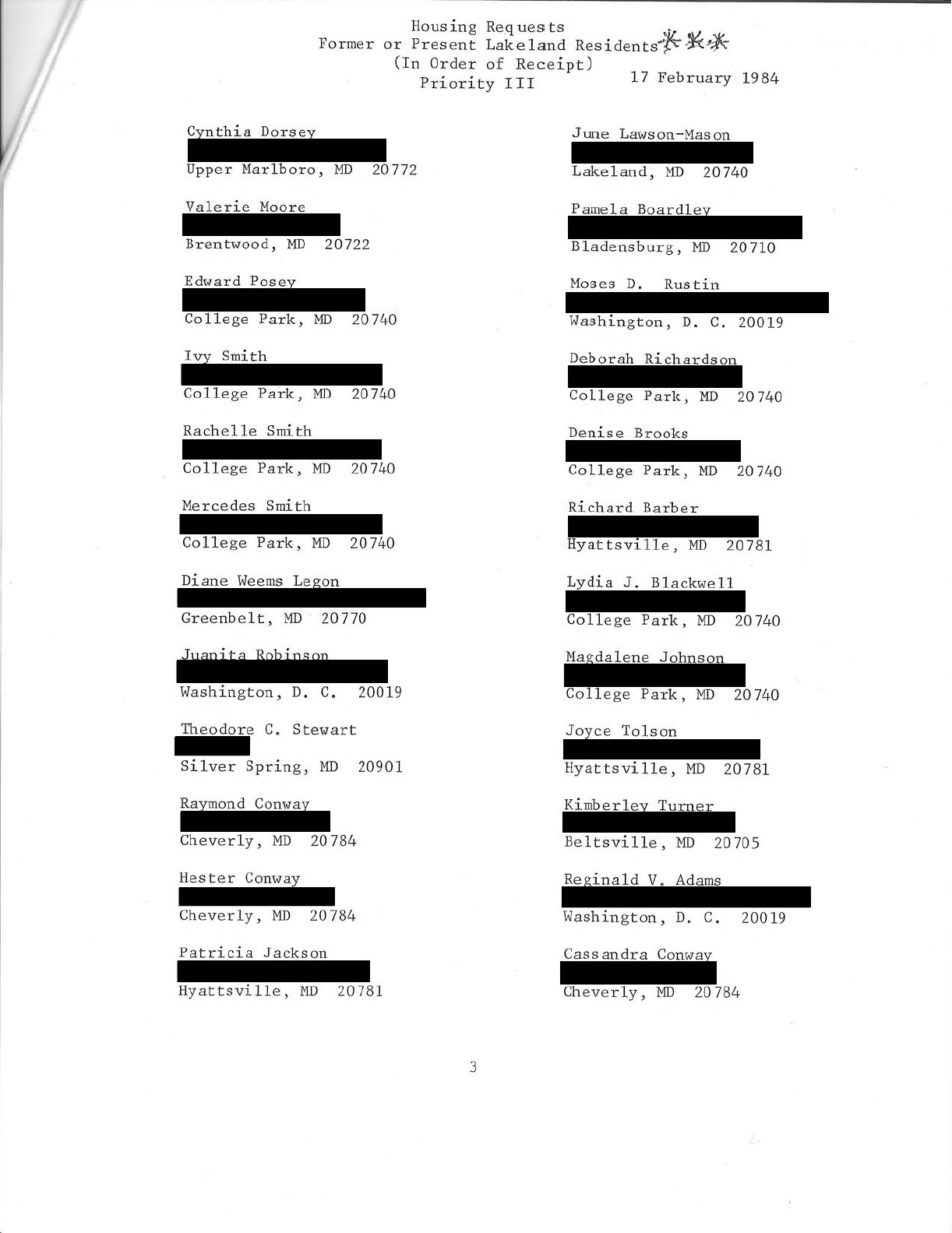
Housing Requests Former or Present Lakeland Residents (In order of Receipt) Priority III. Families who presently or formally lived in Lakeland and are interested in the assist housing being constructed by Leon N. Weiner Associates and are to be given third consideration for housing. The former Lakeland residents consist of families who either moved from Lakeland before the beginning of the Urban Renewal Project or are children of such families or families who were displaced and have married and started families of their own and want to return to Lakeland.

The Diamondback September 15, 1976 Many pieces of Lakeland land were purchased by the Urban Renewal project. The University then discusses the use of Lakeland land for the expansion of their community housing through the Urban Renewal project. This idea is presented by the city community development director, Mr. Edwin Finder. In the meantime, some Lakelanders must rent homes from the city because of the Urban Renewal project’s purchase of their homes. Mr. Finder says that they are to be given first priority in the construction of new housing. At the same time, the Urban Renewal plan exceeded its budget of $5.2 million by another $5 million. The city requested $1.8 million in urgent need funds from the U.S. Department of Housing and Urban Development (HUD) and was approved to receive it to complete the project. The request was sent to the HUD’s office earlier in the summer of 1976. Getting more federal money to complete the project was imperative and was a way to help fix the damage already afflicted on the neighborhood by natural incidents. Mrs. Hollomand part of the Lakeland resident's group stated opposition to the University's involvement in the project. She said the residents had need for new housing.
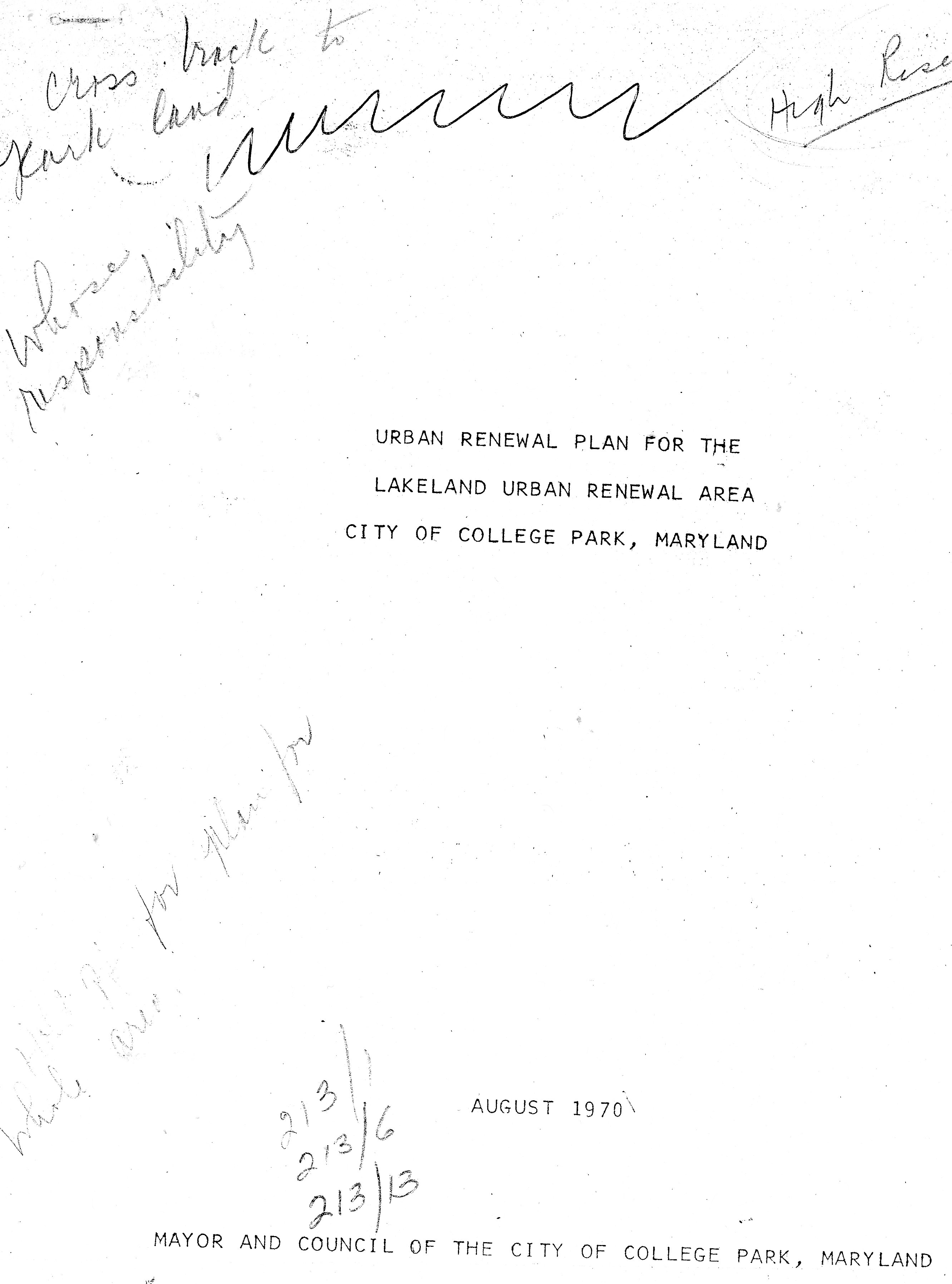
Urban Renewal Plan for the Lakeland Urban Renewal Area City of College Park, Maryland 1970

Showing locations for change in building location
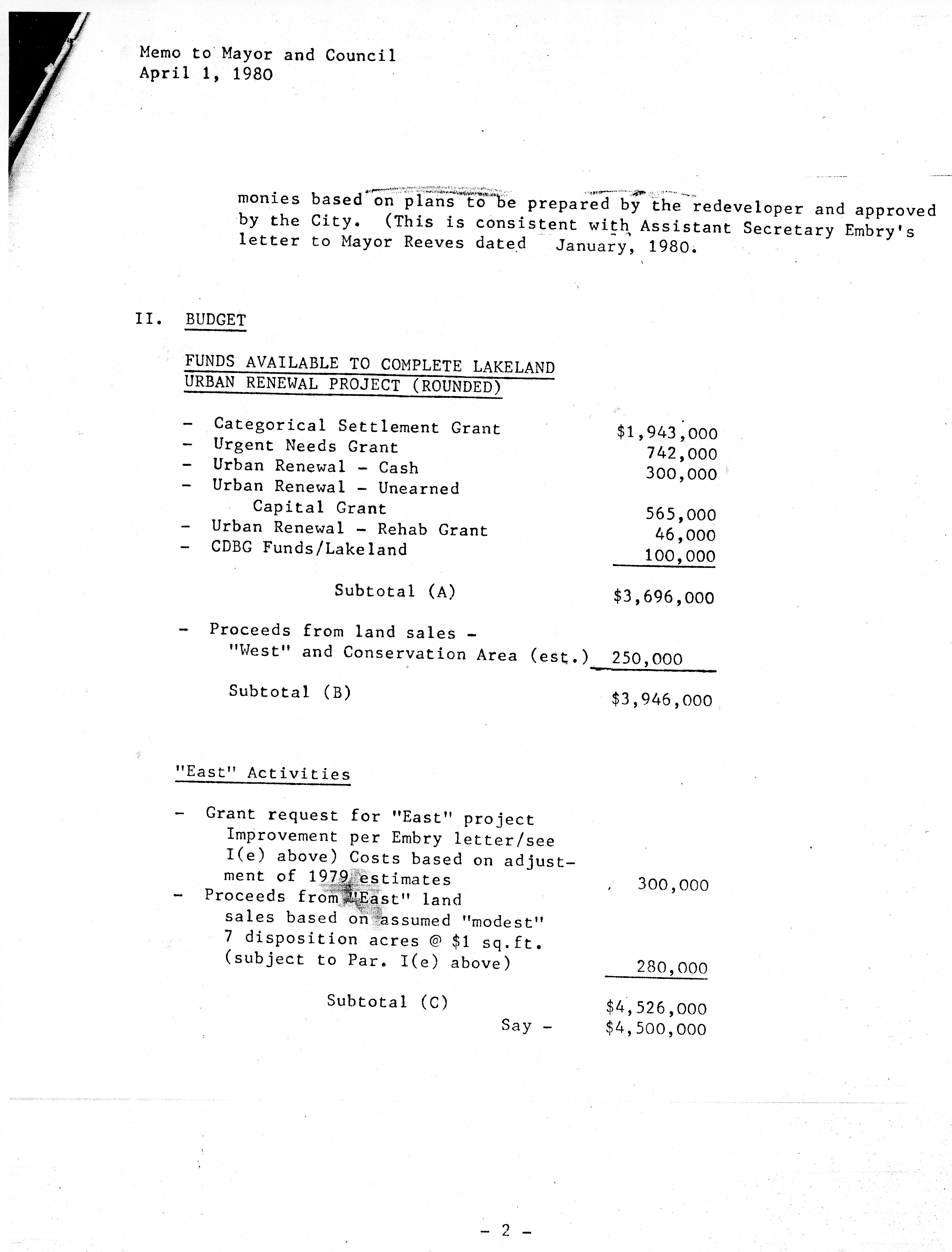
Dated September 9, 1979 advising developer decision to change locations of apartment buildings

Map 2

The Sentinel Prince George's Drawing above article show a well dressed. Black family, man woman and young boy on a building site with home debris and a hole. Behind them is a bulldozer with a seated operator and smoke coming from it's stack. To one side is a high rise building and a sign reading "Lakeland Urban Renewal Area, High-Rise Living for University Faculty and Senior Citizens". The boy is tugging at the man' sleeve. The headline reads "Is this where you used to live, daddy?" During a meeting in 1973 College Park officials announced HUD funding of the Lakeland Urban Renewal project. That evening was a celebration which included residents of the neglected all Black community. Lakeland residents, many of whom had been relocated from their homes which had been torn down were displeased with the proposal. They saw nothing for them. Another meeting two weeks ago was not a happy event. At that developer, Leon Weiner shared his plan for the community. The information was greeted with protests from residents. Rather than a development of single family homes favored by the community Weiner's plan features six single family homes, a high rise for University of Maryland faculty members and another for senior citizens along with some townhomes and finally some low income housing units. One whole area of the community would remain vacant. Residents noted that the plan was set without input from them. They even questioned the selection of Weiner for the project. Early in the project it was clear urban renewal was too big an endeavor for a small city. By that point it was too late to halt the project. Costs snowballed. The original price tag was $1.3 million that grew to $2.9 million and now rests at 10 million. Things went down hill for the community too. In 1968 the city's urban renewal director assured the them of "retaining the community's sprit and identity" "This is a project of urban renewal, not Negro removal." In 1970 the city administrator assured a reporter "No one (in Lakeland) will be displaced." The current urban renewal director reported 67 families had already been moved out and 44 more will be leaving. There is a history of broken promises. Lakeland was not a slum. There were some substandard homes, and poor and unpaved roads. The fault of the city. Lakeland was a vital community with a history. It would be forever torn apart by Weiner's plan. If that night of promise in 1973 was the city's finest hour the finalization of the Weiner's plan in two weeks will be College Park's worst.

Multi page PDF Washington Post by Sharon Conway
Washington Post by Walter B. Douglas